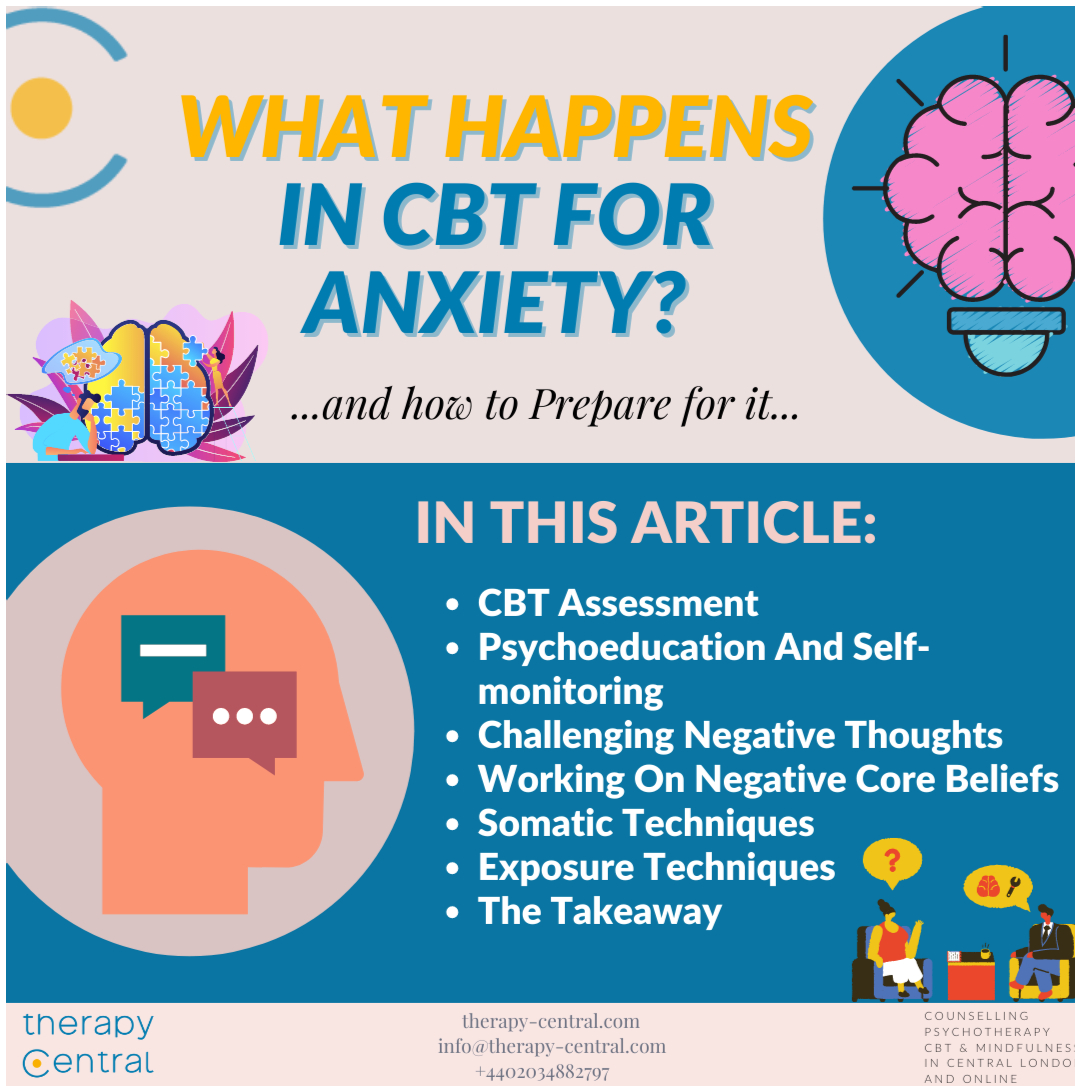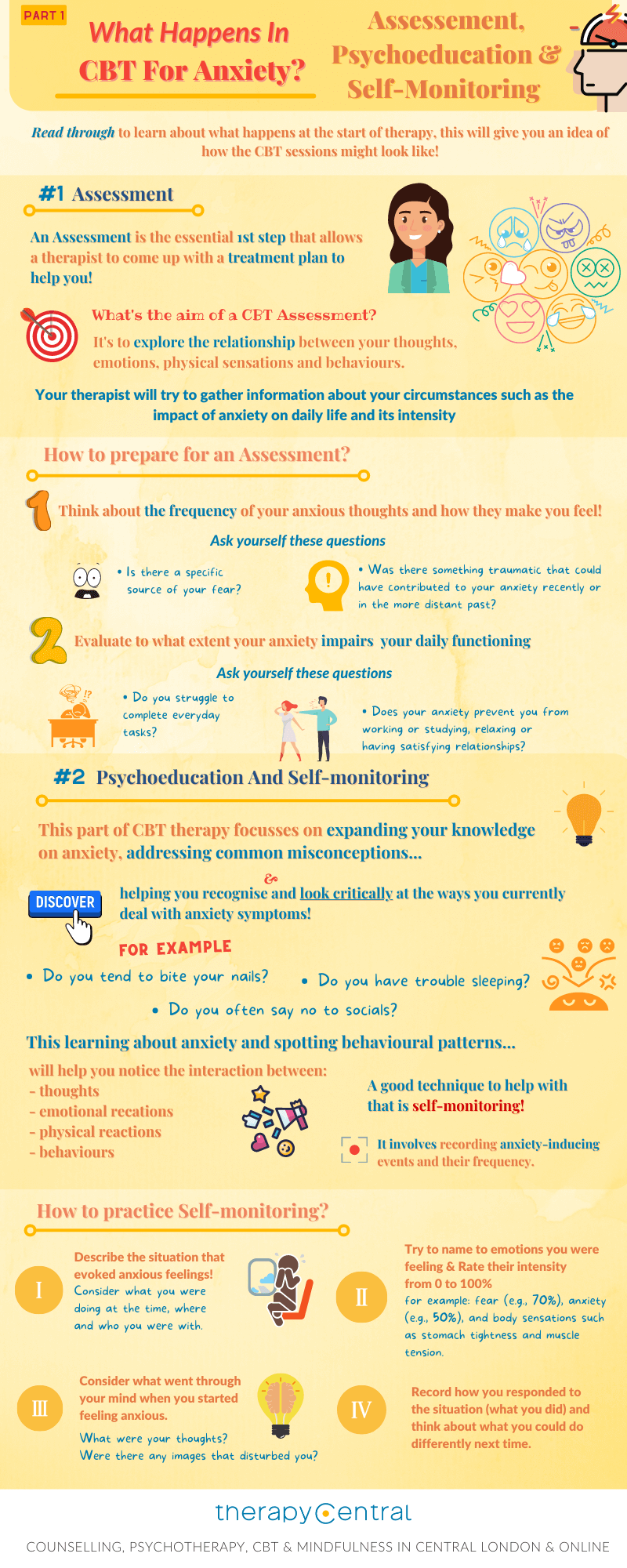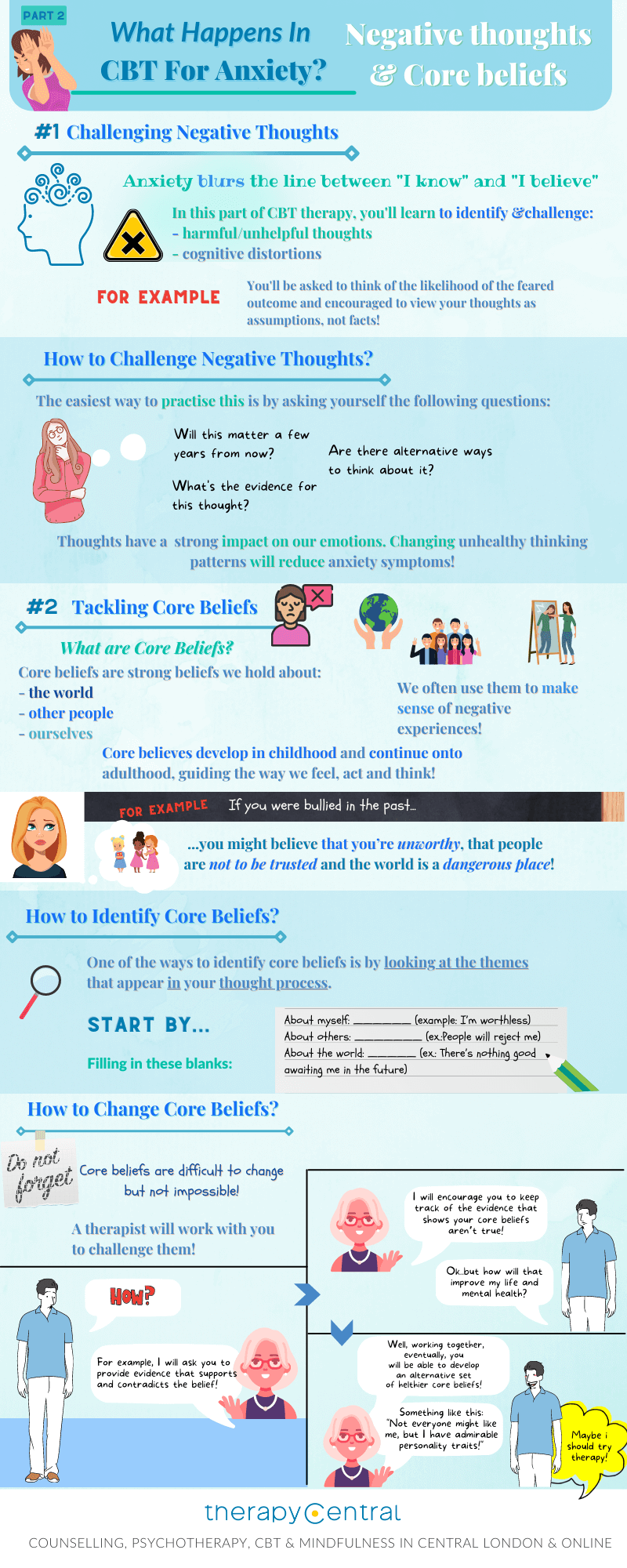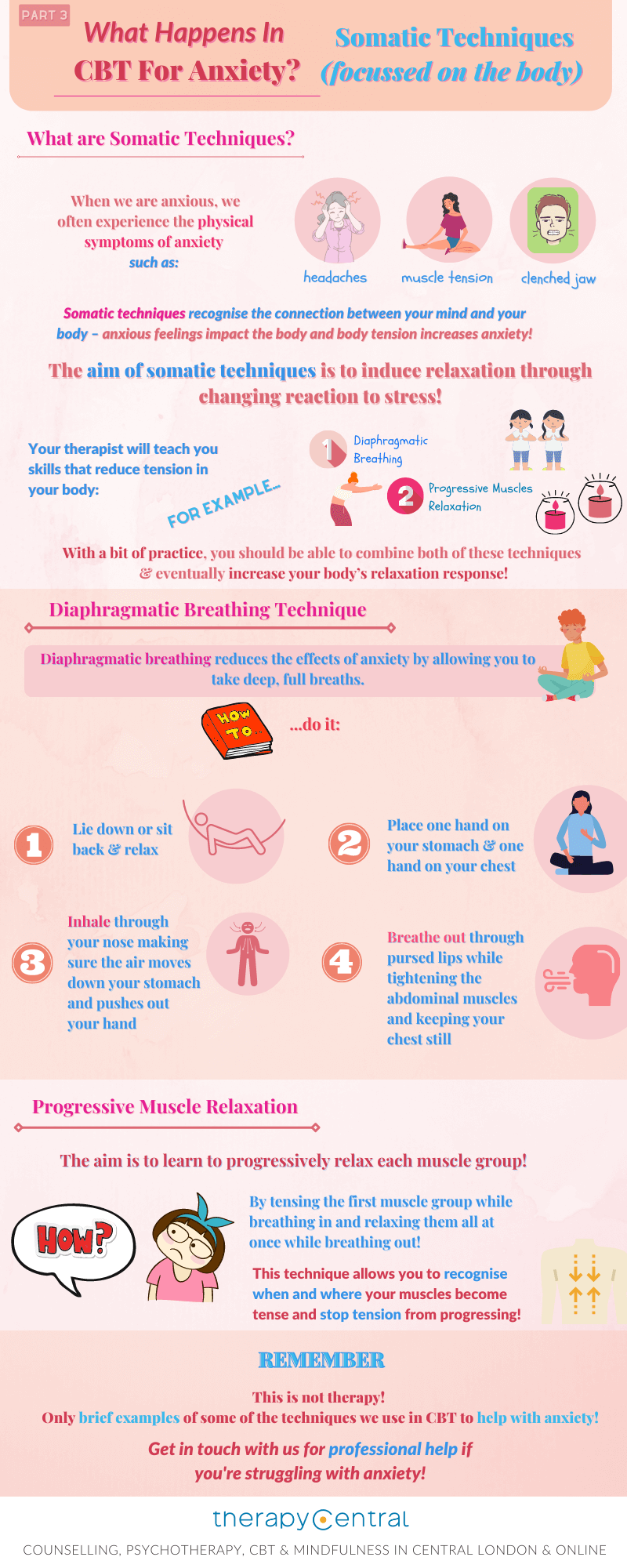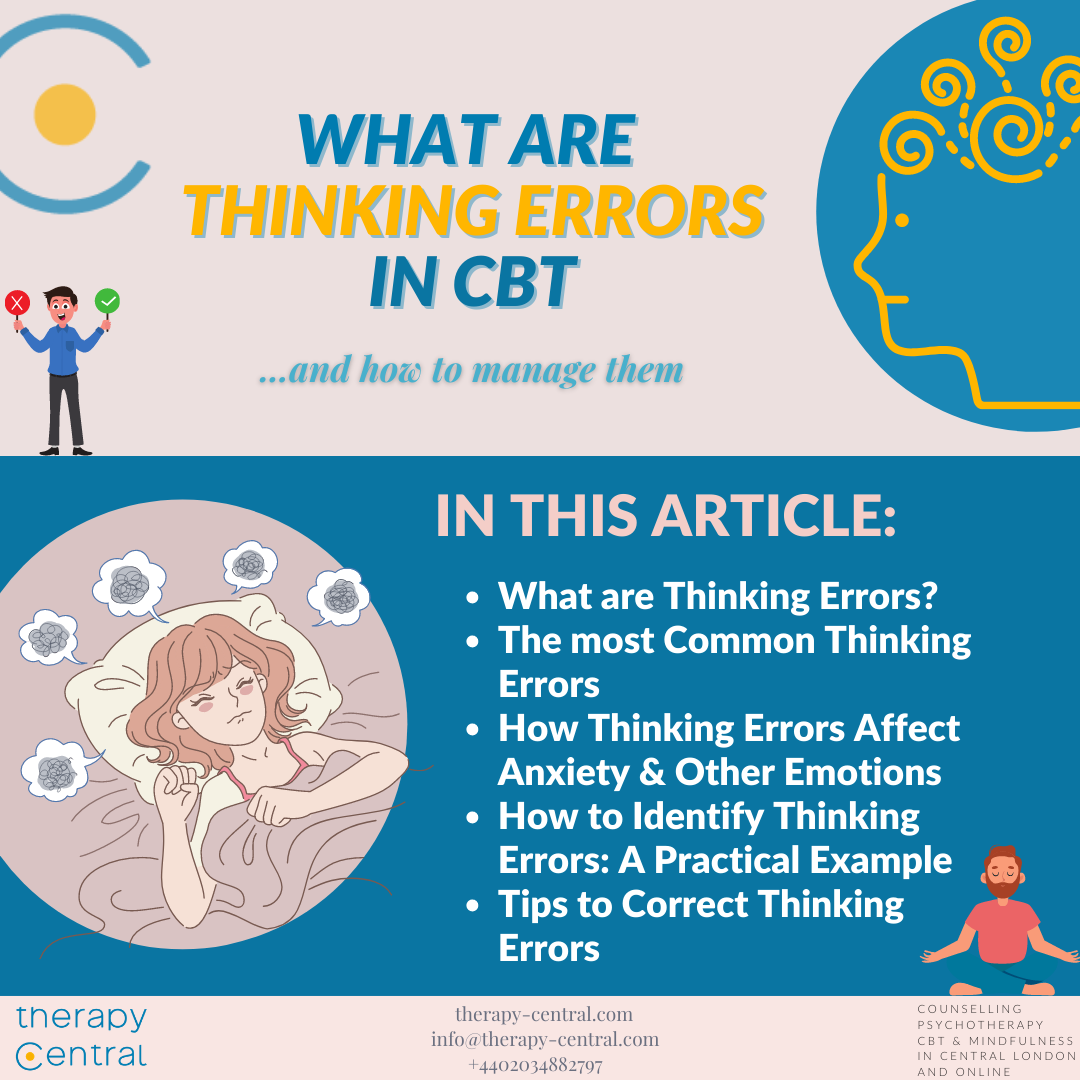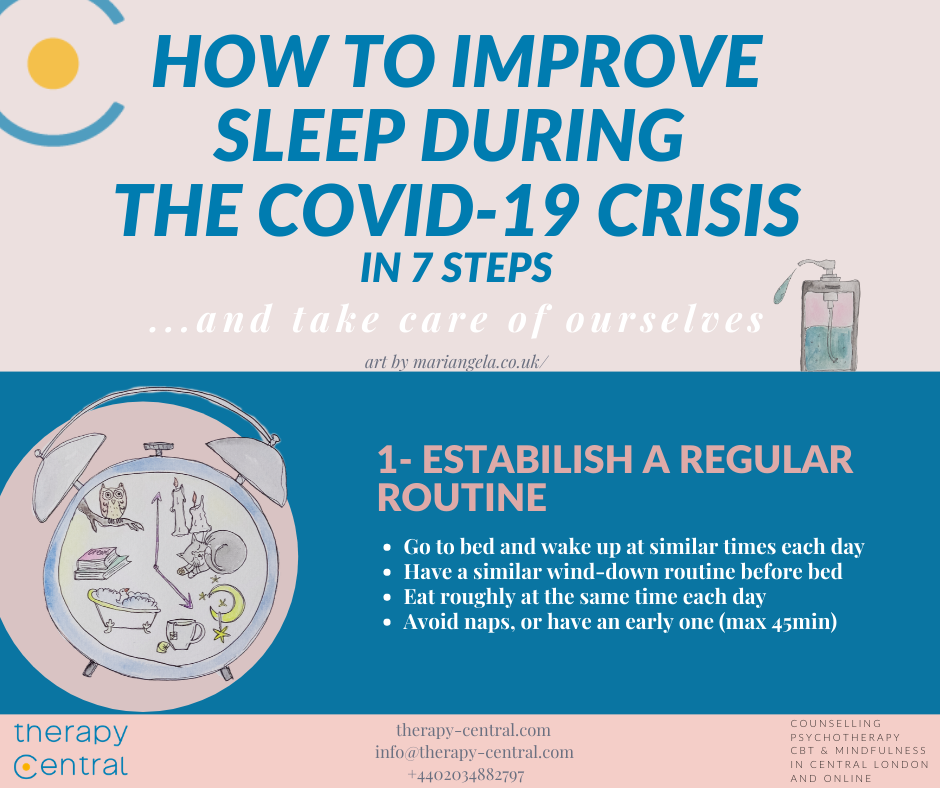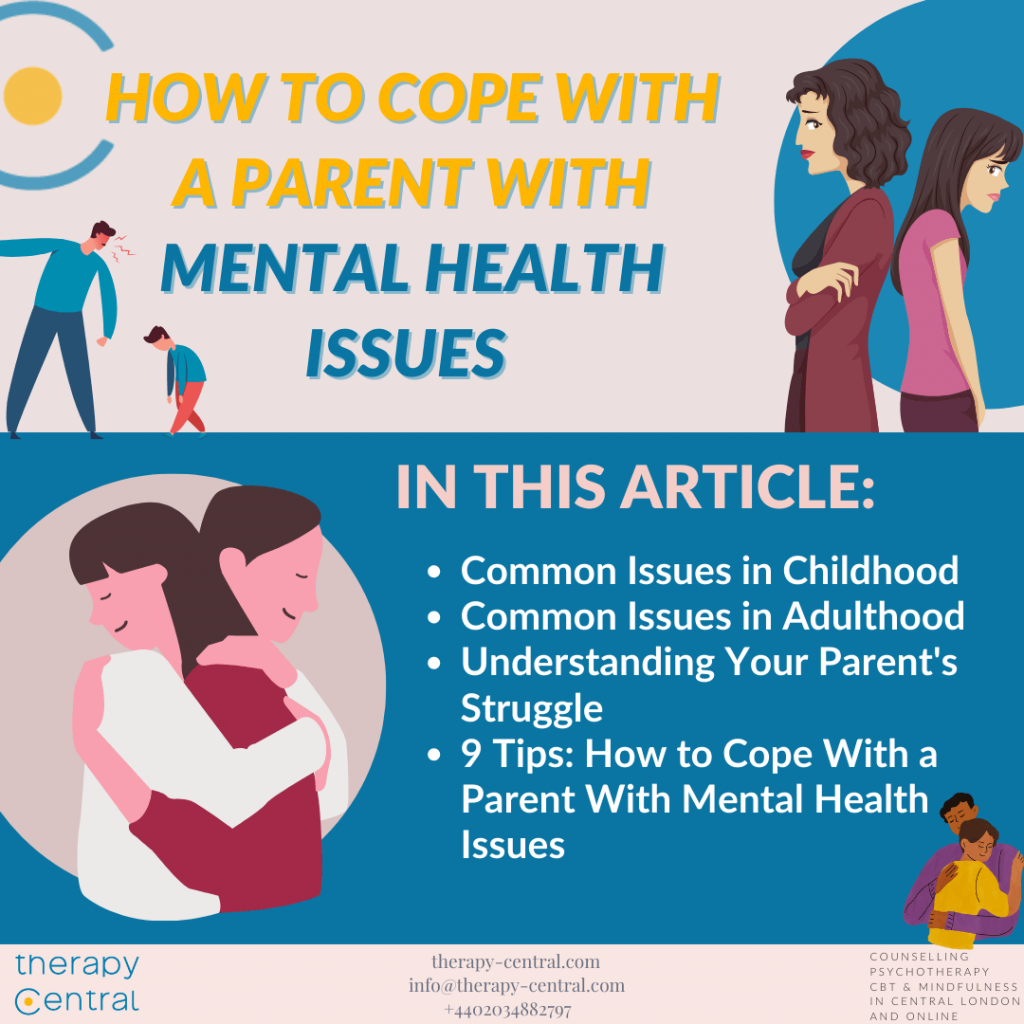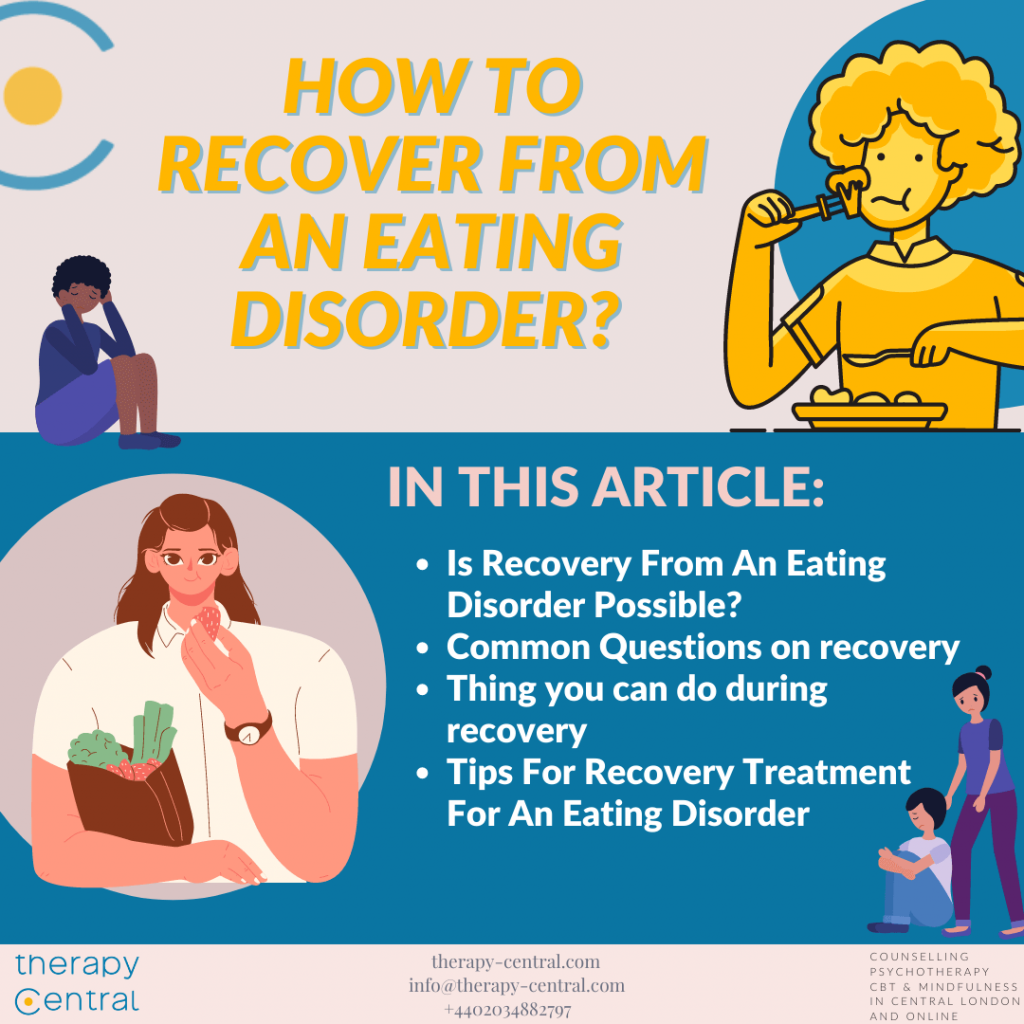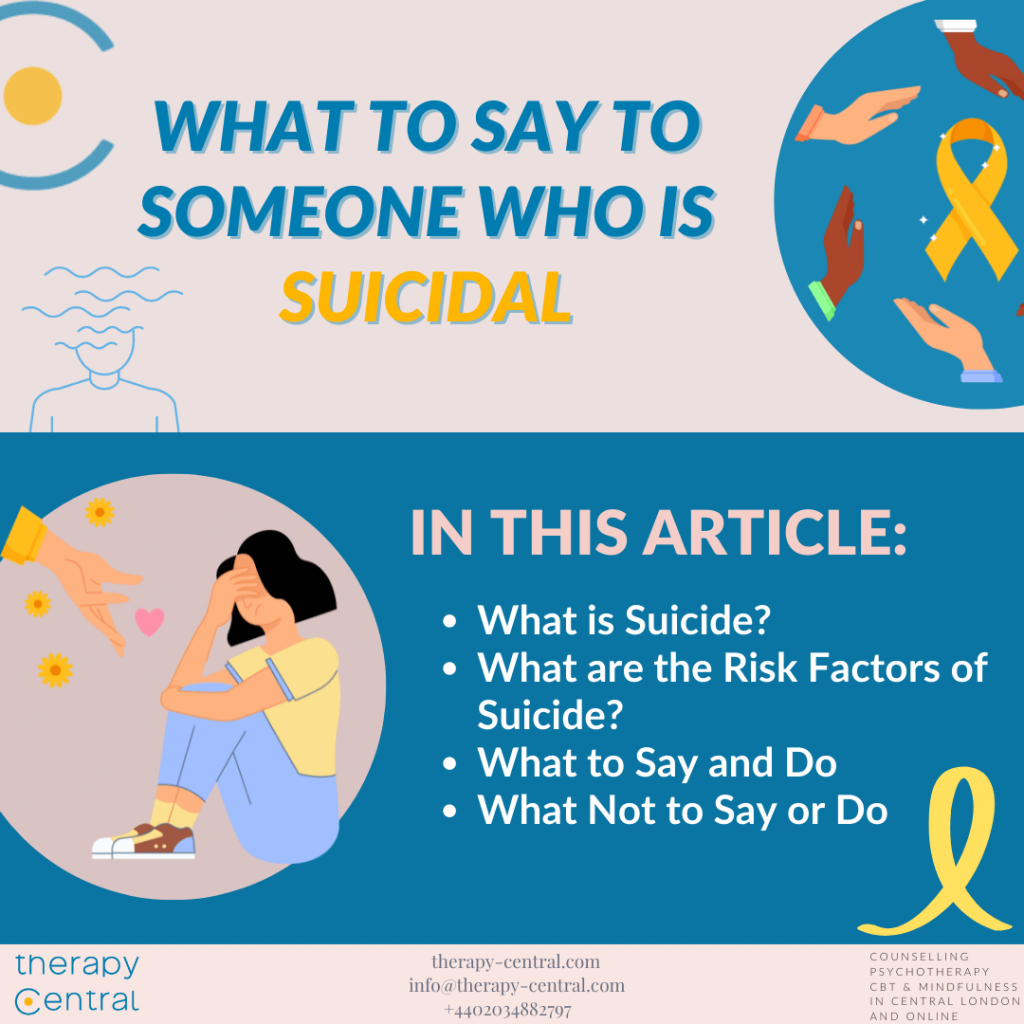Even though assessment might sound daunting, it’s the necessary step that allows the CBT therapist to develop a treatment plan based on the factors that contribute to your anxiety and make it worse. The aim is to initially explore the relationship between your thoughts, emotions, physical sensations and behaviours. Your therapist will try to gather information about your circumstances, such as the impact of anxiety on daily life and its intensity.
How to prepare for a CBT Assessment:
- Think about the frequency of your anxious thoughts and how they make you feel; is there a specific source of your fear? Was there something traumatic that could have contributed to your anxiety recently or in the more distant past?
- Evaluate to what extent your anxiety impairs your daily functioning; do you struggle to complete everyday tasks? Does your anxiety prevent you from working or studying or having satisfying relationships?
Psychoeducation And Self-monitoring
What’s the first thing that comes to your mind when you think of anxiety? Overwhelming? Immobilising? Anxiety tends to be so intense that it’s difficult to link to thoughts or triggers at times. You might be aware that your fear response activates when you’re in a crowded room. Still, you might not be able to pinpoint if the anxiety is related to fear of being judged or the perceived danger of getting stuck and unable to get help.
This part of CBT therapy, known as psychoeducation, focuses on expanding your knowledge on Anxiety, CBT as a model, and addressing common misconceptions. For example, many people believe that anxiety is harmful, but, in reality, a moderate level of anxiety is beneficial. It can protect us from danger and can serve as a source of motivation.
Additionally, with self-monitoring, the aim is to recognise the unique ways you deal with anxiety symptoms. Do you tend to bite your nails? Do you have trouble sleeping? Learning about anxiety and spotting behavioural patterns will help you notice the interaction between thoughts, emotional and physical reactions, and behaviours. Self-monitoring can also help you and your therapist identify responses to anxiety that keep your difficult emotions going. For example, you might discover how consistently avoiding social gatherings for fear of being judged also makes your anxiety worse. Self-monitoring involves recording anxiety-inducing events and their frequency. It often starts in the therapy room but continues between sessions by taking daily/weekly notes.
How To Practise Self-monitoring
- Firstly, you should describe the situation that evoked anxious feelings. Consider what you were doing at the time and who you were with.
- Try to name the emotions you were feeling, for example: fear, anxiety, distress, and body sensations such as stomach tightness and muscle tension. Rate their intensity from 0 to 100%.
- Next, you should consider what went through your mind when you started feeling anxious. What were your thoughts? Were there any images that disturbed you?
- Lastly, record how you responded to the situation: was it helpful? Did it decrease your anxiety? Can you think of what you could do differently next time?
Share this Image On Your Site
Challenging Negative Thoughts
Anxiety blurs the line between “I know” and “I believe”. In this part of CBT therapy for anxiety, you’ll learn to identify and challenge harmful thoughts, including cognitive distortions (or thinking errors). For example, you’ll be asked to think of the likelihood of the feared outcome and encouraged to view your thoughts as assumptions, not facts. The easiest way to practise this is by asking yourself the following questions: “What’s the evidence for this thought?”, “Will this matter a few years from now on?”, “Are there alternative ways to think about it?”. Ultimately, thoughts impact our emotions, hence changing unhealthy thinking patterns will reduce anxiety symptoms.
Working On Negative Core Beliefs
Core beliefs are strong beliefs we hold about the world, other people, and ourselves to make sense of our negative experiences. They often develop in childhood and continue onto adulthood, guiding how we feel, act, and think. For example, if you were bullied in the past, you might believe that you’re unworthy, that people are not to be trusted, and that the world is dangerous.
One of the ways to identify core beliefs is by looking at the themes that appear in your thought process. You can start by filling in these blanks:
About myself______ (example: I’m worthless)
About others_______(People will reject me)
About the world_____(There’s nothing good awaiting me in the future)
Core beliefs are difficult to change but not impossible. A therapist will work with you to challenge them by asking you to provide the evidence that supports and doesn’t support the belief. You’ll be encouraged to keep track of the evidence that shows your core beliefs aren’t true. Eventually, you should be able to develop an alternative set of core beliefs. For example, ‘Even though not everyone might like me, I have admirable personality traits, and I’m a good person.’ Adopting healthier, more realistic core beliefs is directly linked with lower anxiety levels and higher quality of life.
Share this Image On Your Site
Somatic Techniques
The aim of somatic techniques is to induce relaxation through changing reactions to stress. When we are anxious, we might experience somatic (i.e., bodily) anxiety symptoms such as headaches, muscle tension, tight throat, or clenched jaw. Somatic techniques recognise the connection between your mind and your body – anxious feelings impact the body, and body tension increases anxiety. Your therapist will teach you skills that reduce tension in your body, including breathing techniques and progressive muscles relaxation. Once you’ve had a bit of practice, you should be able to combine both of these techniques and eventually increase your body’s relaxation response.
Diaphragmatic Breathing To Increase Relaxation
While shallow breathing is a habit commonly associated with anxiety, diaphragmatic breathing reduces the effects of anxiety by allowing you to take deep, full breaths.
How to do it:
- Lie down or sit back and relax
- Place one hand on your stomach and one hand on your chest
- Inhale through your nose, making sure the air moves down your stomach and pushes out your hand
- Breathe out through pursed lips while tightening abdominal muscles and keeping your chest still
Progressive Muscle Relaxation To Reduce Anxiety’s Physical Symptoms
The aim is to learn to progressively relax each muscle group by tensing the first muscle group while breathing in and relaxing them all at once while breathing out. This technique allows you to recognise when and where your muscles become tense and stop tension from progressing. When we are stressed, our muscles respond with tension, which lets our bodies know we experience stress. When you’ve been feeling anxious for a while, feeling tense becomes your default state, and you lose the ability to recognise the difference between tension and relaxation. You will learn to differentiate between these two states and use this technique to lower anxiety levels with regular practice.
Share this Image On Your Site
Exposure
Exposure is one of the behavioural techniques in CBT for Anxiety that allows you to gather evidence against the belief that something terrible will happen. For example, you might be avoiding going to public places because you fear having a panic attack. In therapy, you could be exposed to stimuli via imagination or asked to create a list of anxiety-inducing circumstances and start working through them from the least challenging situation. Interestingly, one of the newer ways to incorporate exposure into the therapy plan is using virtual reality. Studies show that it’s effective in treating phobias such as fear of flying or fear of heights. [1]
The Takeaway
CBT is an outcome-focused treatment that combines cognitive and behavioural techniques that enable you to regain the control lost due to anxiety. Recognising anxiety symptoms and familiarising yourself with how therapy works is the first step to healing. At Therapy Central, we offer CBT therapy and other evidence-based interventions to help you bring back joy and fulfilment to your life. You don’t have to suffer alone.
Contact us for a free 15 min consultation. We’re here to help.

